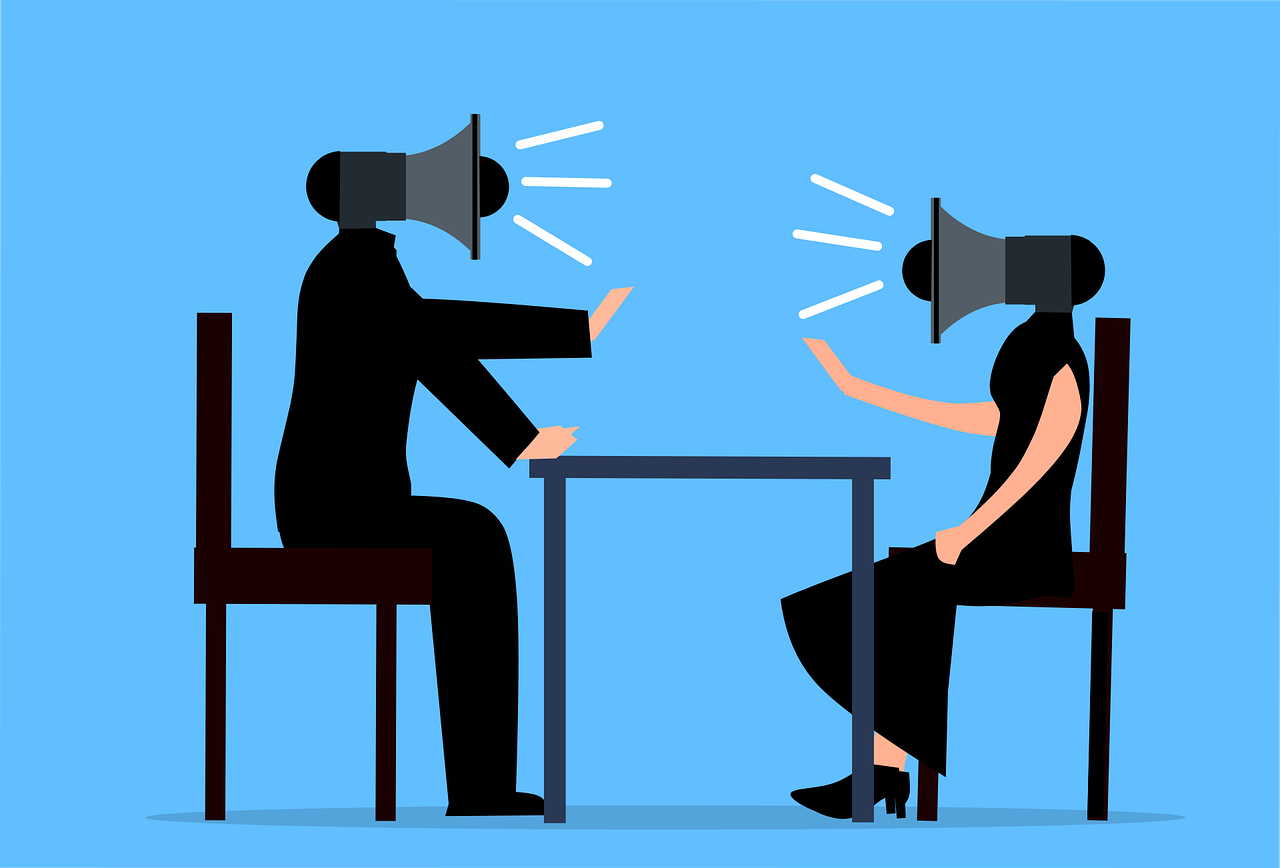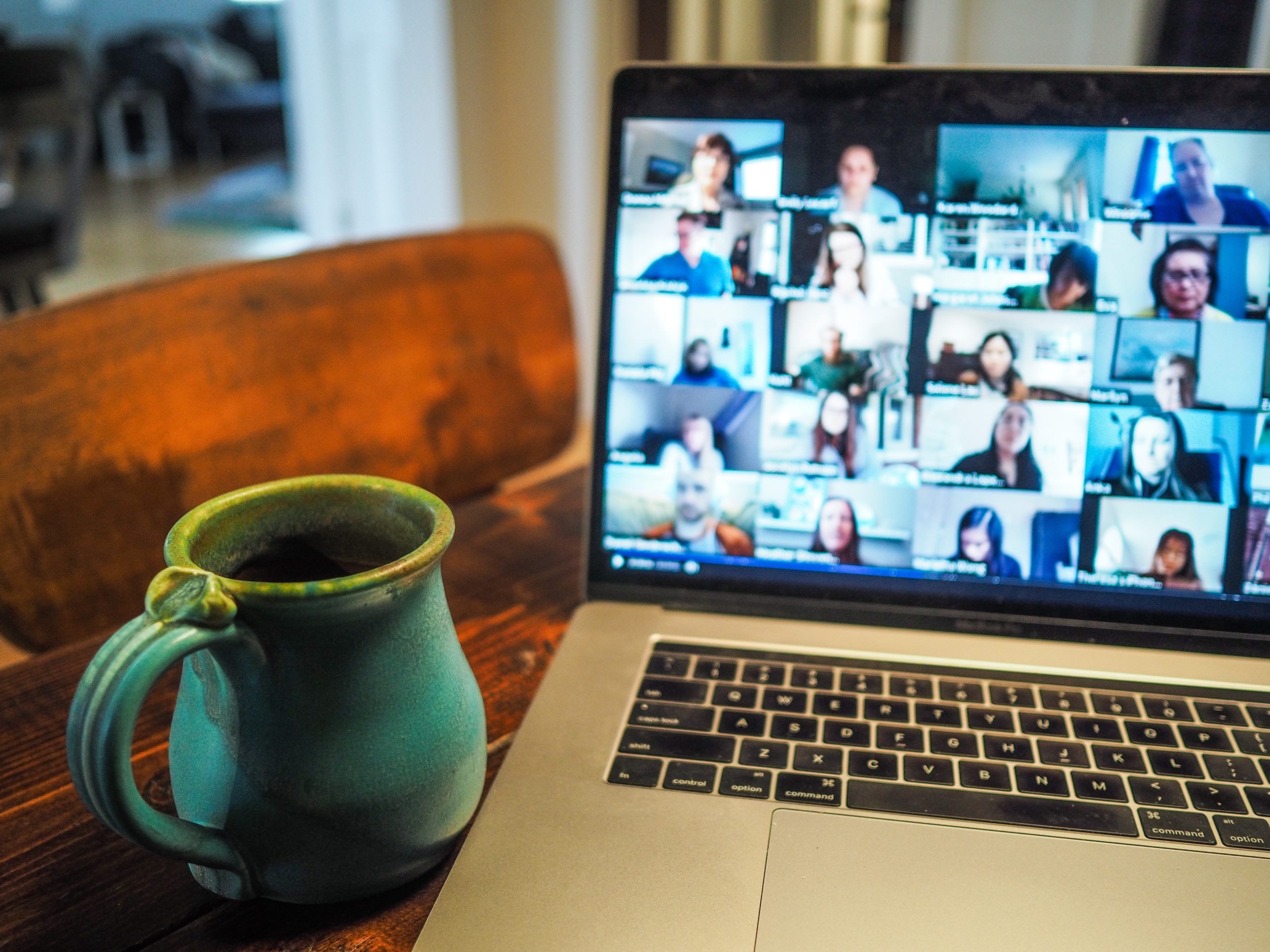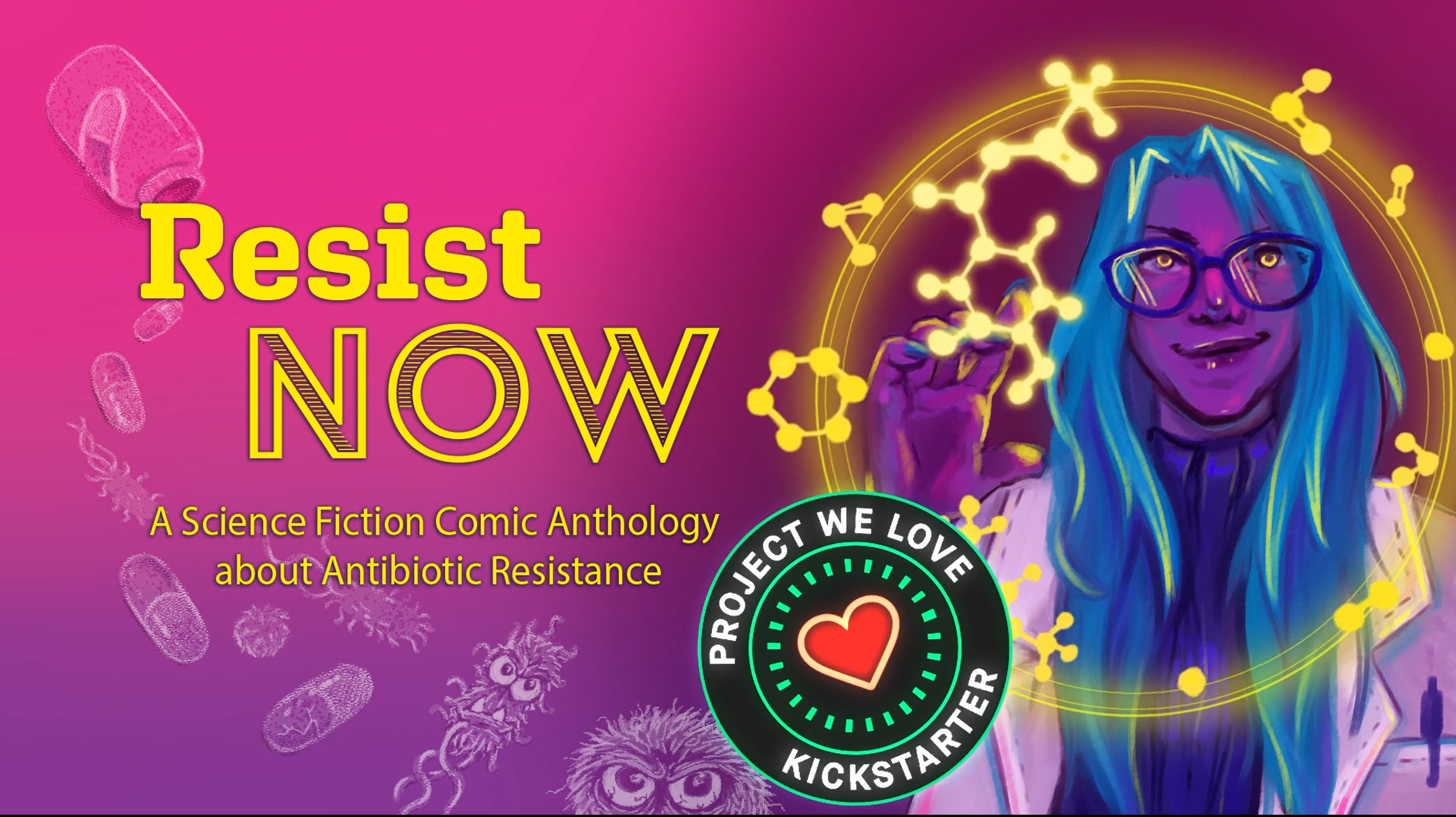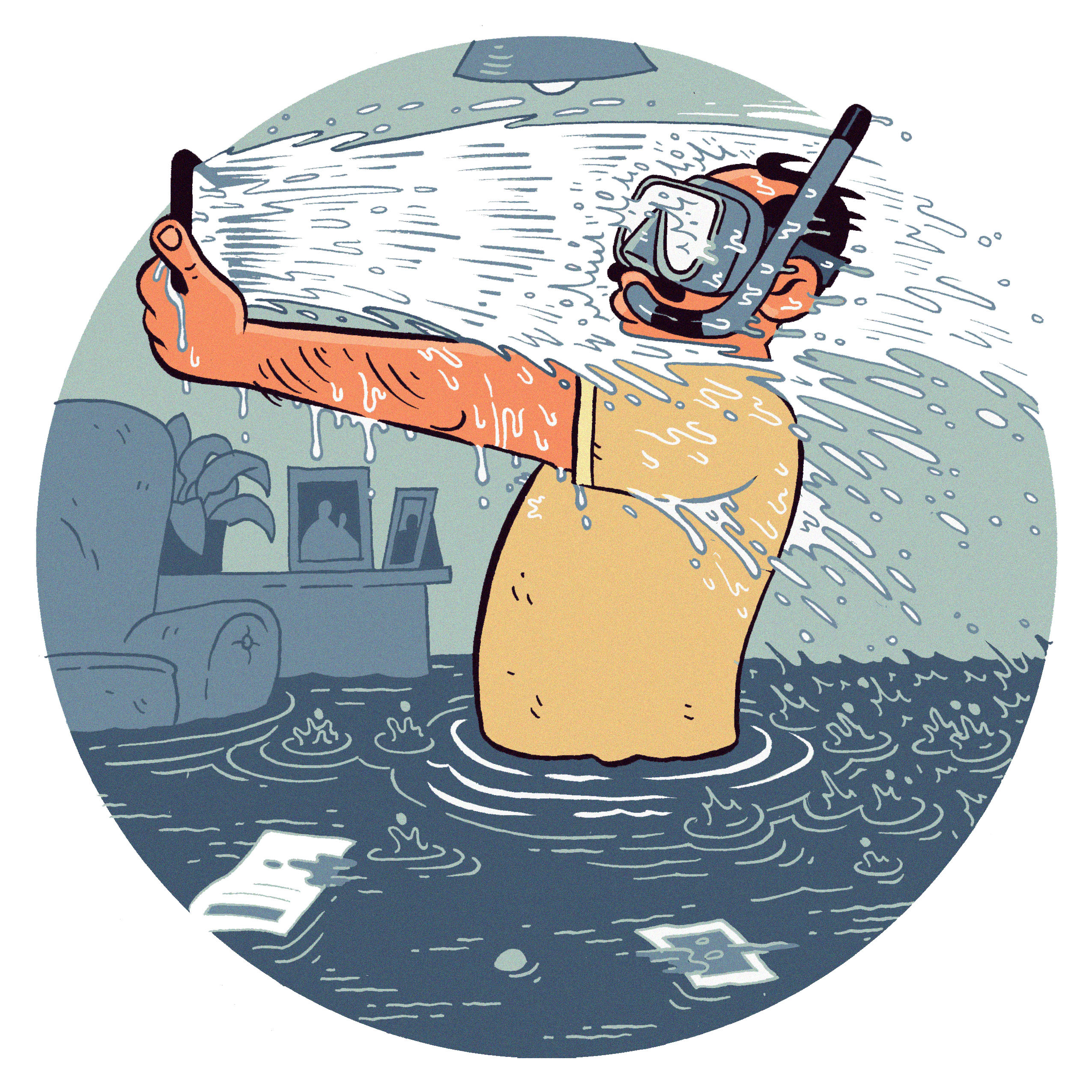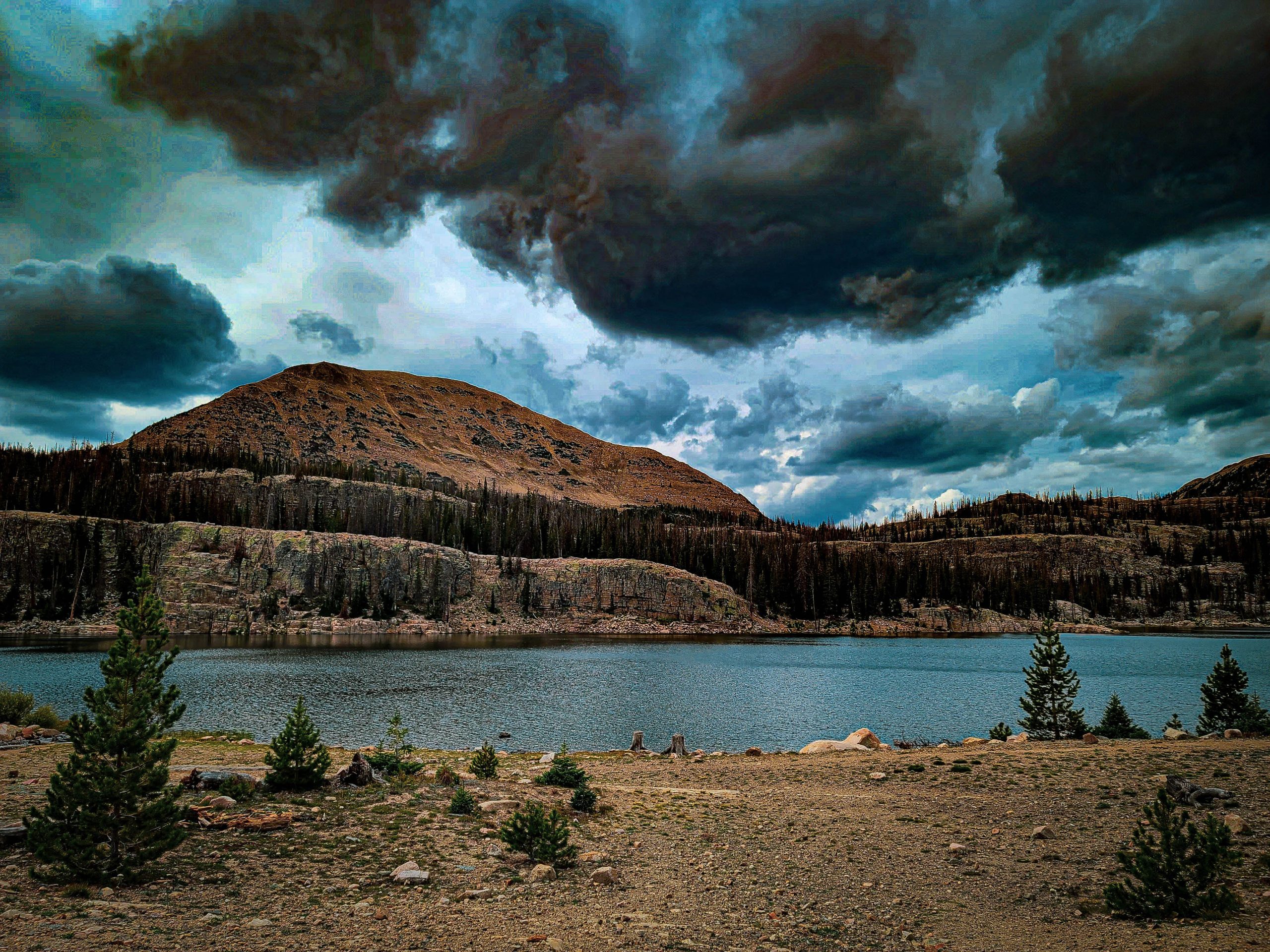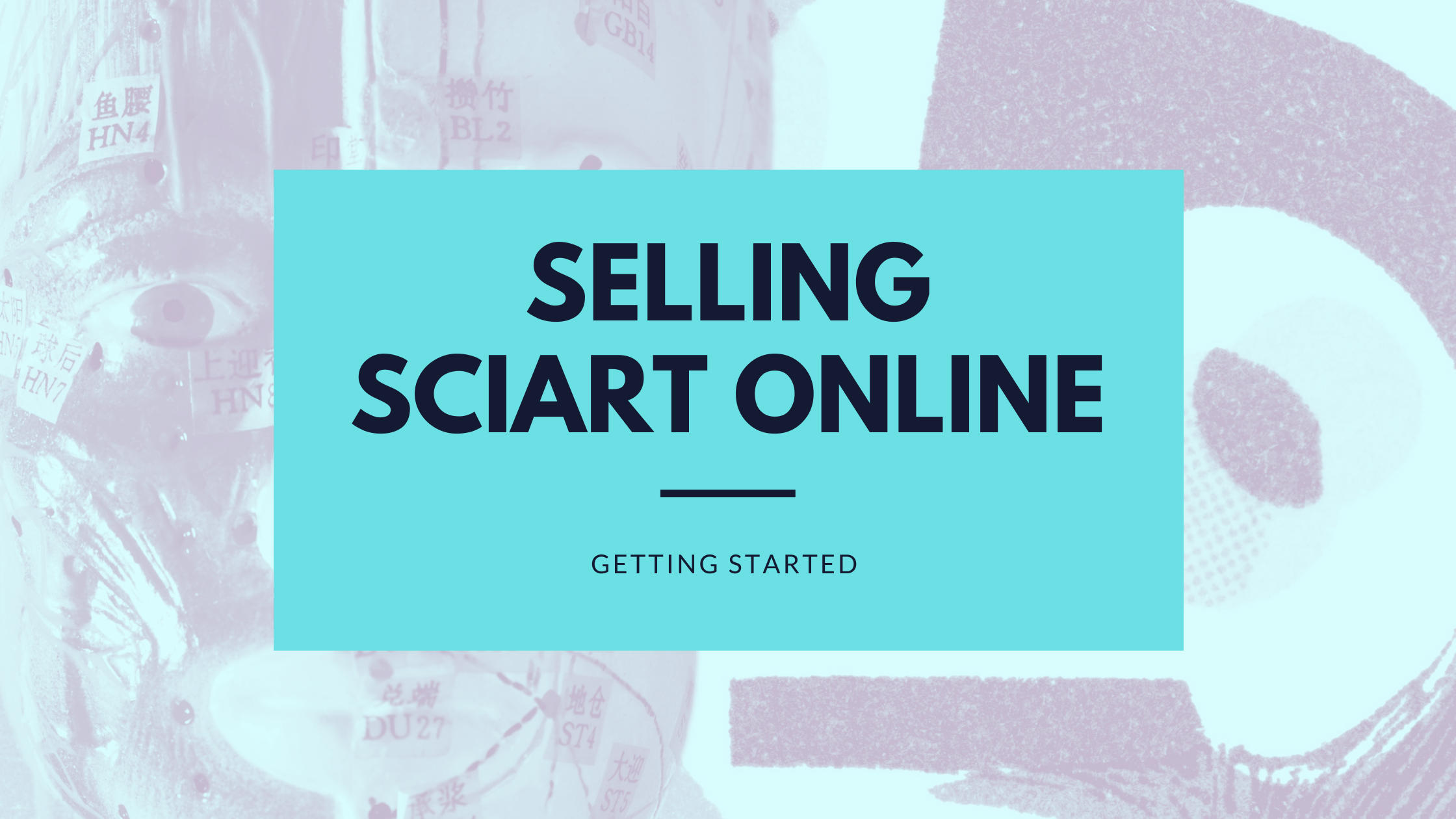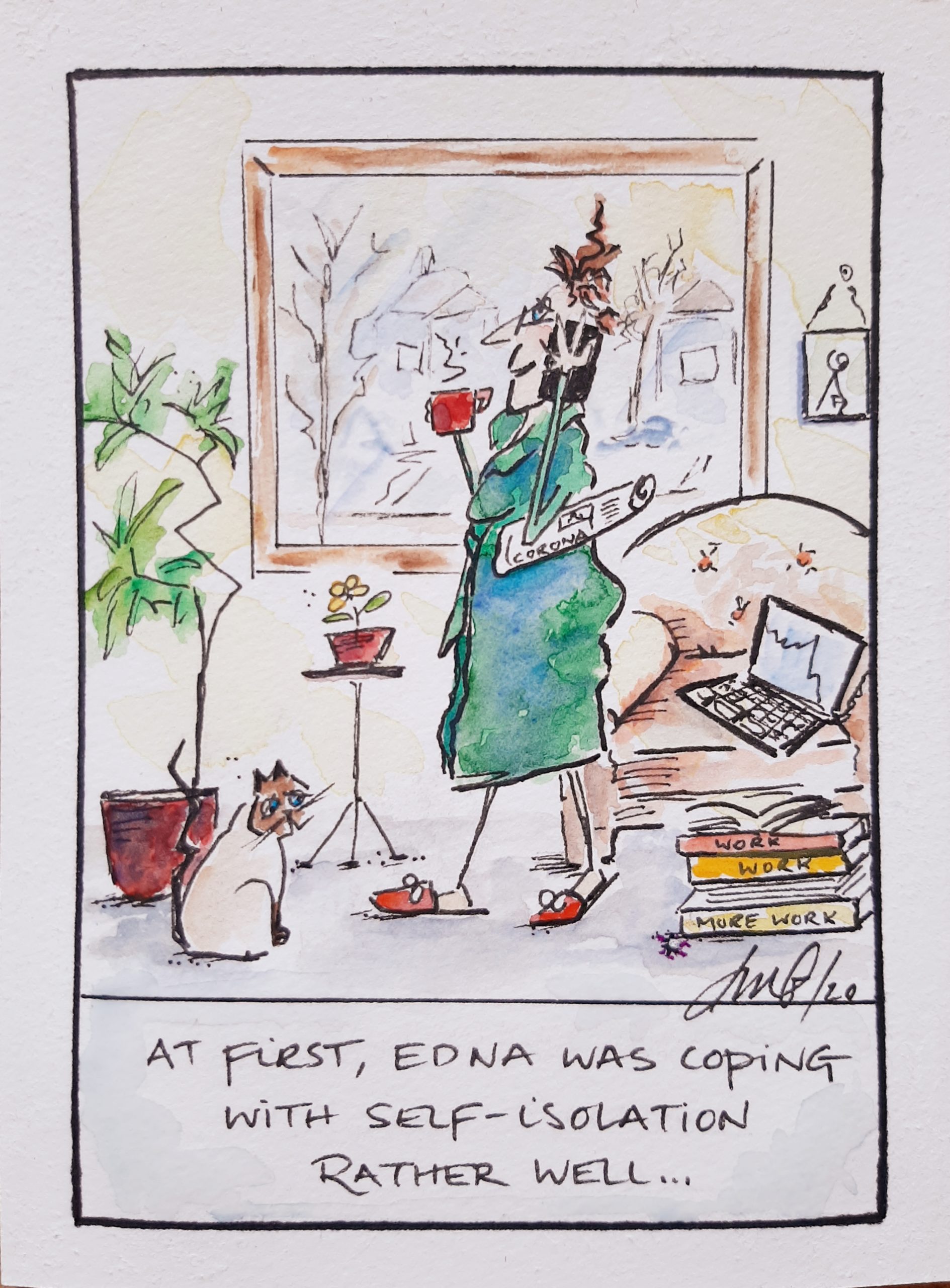
By Anna Garleff
From the Artist
“For the first time, the streets were quiet, you could hear birdsong, there was a calm. People were exhausted and welcomed the world being put on pause for a moment. The jokes flew fast and funny over the internet and the whole thing seemed humorous in a way. Until the headlines started getting to people, and we realized the gravity of what was truly happening.”
Follow #CoronaEdna on her personal coming to terms with the pandemic, social distancing, and her own identity.
The Science
While a lot of people are referring to staying in their homes during the current pandemic as “self-isolation”, this term actually describes the separation of sick people with a contagious disease from people who are not sick. Quarantine, on the other hand, “separates and restricts the movement of people who were exposed to a contagious disease to see if they become sick” (CDC). You might self-quarantine if you think you’ve been exposed to the 2019 novel coronavirus and you don’t want to make others sick.
“Isolating” yourself and your family at home, a form of social distancing, is also an important way to help prevent the spread of COVID-19 illness.
Currently, the CDC also recommends that people at risk of severe illness from COVID-19, including individuals over the age of 65, those with compromised immune systems, those with pre-existing lung or heart disease or diabetes, take extra precautions. This includes staying home if possible.
At Lifeology, we believe that art can help us better understand and relate to complicated science and issues. Have artwork to share here? Contact us at lifeology@lifeomic.com.
Are you a scientist who wants to work with an artist? Contact us!
